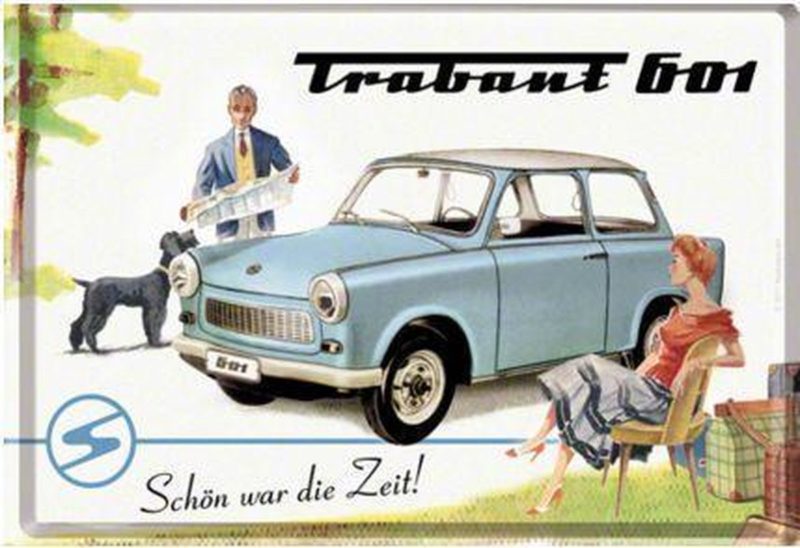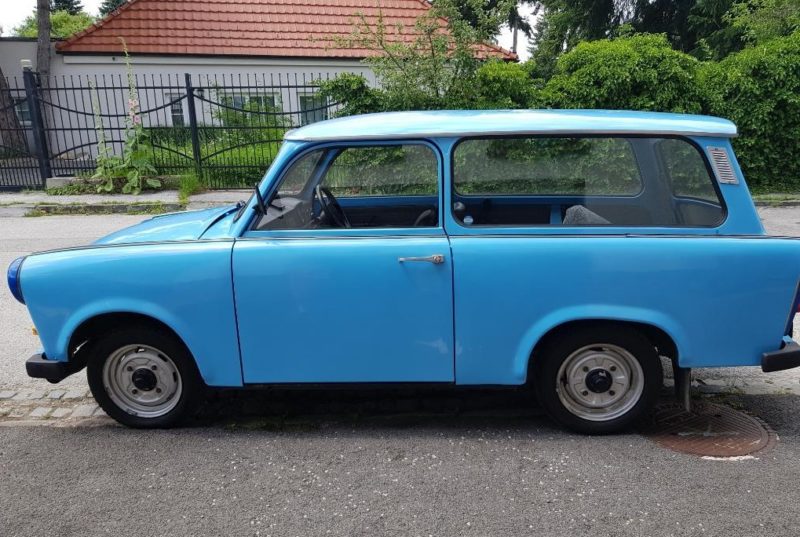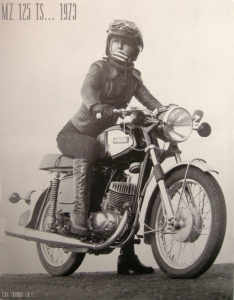Talked to someone yesterday about the former GDR where life was good for about 80% of the people. Housing was cheap, education and health care were good and free. And if you just walked in line, you would have a job, or at least a job, all your life.
Many ex Ossies were therefore not happy with the unification
They would rather have had the chance to turn their 'country' into a kind of GDR with advantages. In the meantime there is nostalgia for the time when the GDR was still East Germany "De Ostalgie".
Meanwhile, the new federal states are really not in good shape and old GDR citizens feel abandoned by God and government. But the system had gone down financially. Because during the GDR era, initiative, research and development were not really propagated.
Bureaucracy at its best
And then you get a police station where 800 tires for 2 MZ police motorcycles are stored. Simply because The System stores that four tires for the local police motorcycles had to be sent every six months. Another government office received a crate every four years with a new diesel engine for a truck they had never owned. And if you agitated too much against such administrative misunderstandings, someone was irritated somewhere on the bureaucratic ladder and you possibly came into the focus of the Stasi.
In the meantime, some books have been published about 'classic' cars and motorcycles from the GDR era. Those books are educational to endearing at the very least. Because the idea of making the reinforcement of the 'plestik' Trabantjes from old textiles is a very nice weakness.
And those MZs weren't wrong at all
Let us remember that Suzuki's competitive success was based on the ideas of Walter Kaaden who fled the GDR and then gained deep knowledge of capitalism in the West.
As a state-owned company in the former GDR, MZ was a company with more than 3000 employees and manufactured up to 100.000 motorcycles per year.
Trabant, cotton and lignite
Trabant is the brand name of a series of models from the East German car factory VEB Sachsenring Automobilwerk Zwickau in Zwickau. The name was chosen in 1957 after a competition after the car was first sold under its type designation. The name is very appropriate: on the one hand it means as much as 'buddy'. Many people, after a considerable wait, really considered their Trabant part of their family. On the other hand, the name refers to Erdtrabant, or satellite. The car had to show that the GDR was going along with the technological progress that delivered the first satellite in the Soviet Union in 1957.
The inner part of the body was self-supporting of metal, but the outside of the fenders, doors, roof, bonnet and boot lid were made of Duroplast, a plastic made of cotton fibers soaked in phenolic resin. The Duroplast was used because of a steel shortage due to a trade embargo by the West, and a surplus of cotton fibers from the Soviet Union. The phenolic resin was extracted from brown coal, which was widely available in the GDR.
Dutch imports
The importer in the Netherlands was first Van Hoek from Ravenstein. Freight trains arrived there with dozens of wagons full of Trabants, which were then transferred to the nearby importer's premises. In the late 1969s, the import went to De Binckhorst Auto & Motor Import in The Hague. In 601 the 3.795 standard model in the Netherlands cost 4.000 guilders, making it one of the few cars below 500 guilders, together with the Fiat 3, the Jalta 3A500 and the Autobianchi XNUMX Quattroposti.
Also read:
- Trabant
- Trabant as a boat
- Inventor Trabant
- MZ, Jawa and Planeta: Socialist workhorses
- MZ BKX NUMX









Yes. not everything was bad in the GDR, but just a little Politics, that bastard of Helmut Kohl of the German CDU (his own two sons even messed up with him) let them run nicely, the wrong informants the chance and time Given that all the secret information of the Stasi could be destroyed (what is left of it they are still stuck together), then set up the Treuhand to get all the important institutions, buildings and factories under control and one after the other to go under to counter competition in West Germany, this and more has caused almost all of them to become unemployed and afterwards people felt and still feel 2nd class! There is still a long way to go!
Agree.
Nice article again, because of the paragraph about cars under 4000 guilders that were delivered in the Netherlands, I was also curious about the Yalta, would there be any copies left ..?
https://nl.wikipedia.org/wiki/ZAZ_965
We look up!
The RDW gives ZERO cars of the brands Yalta and Zaporozhets on license plate in the Netherlands. 3A3 is Cyrillic for ZAZ, Zaporozhsky avtomobileboedivnyj zavod, Zaporozhian car factory, Ukraine.
Imports at Gremi were already progressing slowly at the time. Also, the model 965 was not very durable, it was known that over time the torsion bar springs gave way, a defect that was hardly cost-effective to repair. The later 966 to 968 were better but never really a popular model here in the country.
The factory still exists and now produces licensed models.
Well, impressive, in retrospect life was good for about 80% of the people in the GDR. Housing was cheap, education and health care were good and free and everyone had a job. I went there a few times at the time and it seemed a bit different then. You went to an open air museum and came to a table with 3 men / women behind it, One to tear the ticket off the roll, one to hand it over and the third took the money. The houses belonged to the state, so if there was a hole in the roof, the council had to send someone, which could take weeks or months if they arrived. Schooling was free but if your child did not become a member of the FdJ (their version of the Hitler Youth) then he / she could not participate in anything and forget the future. And the free health care also meant that a heavily pregnant friend in the hospital had to walk several floors up the stairs to see a doctor. In that time I have barely met people who spoke positively about the regime, if they dared to talk to anyone from the west. Just like with us, these kinds of stories fit in nicely with the tradition of the 'good old days', but keep it if they really return.
Is noted. That is indeed the relativity of things.
There was a joke going around among the Ossies in the 90s:
“Everything they used to teach us in the GDR at school and in the youth movement and what they said on TV and wrote in the newspaper about socialism was, of course, all just propaganda. But everything they told us about capitalism, well, that was absolutely true!”
The one who fled from MZ to the west was not Walter Kaaden, he was the engineer at MZ. It was motorcycle racer Ernst Degner who fled west on August 13, 1961, while the infamous Berlin wall was being built on that very day. Ernst Degner was welcomed with open arms at Suzuki, he had brought the pieces with technical knowledge of the MZ two-stroke that Suzuki could benefit from.
Thanks for the correction. There used to be more time to go through a text again!